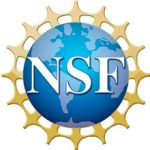Funding agency
Award number
CNS-2011411Dates
April 1, 2019 - March 31, 2024Description
Over the last few years, there has been tremendous growth in the number of wirelessly connected mobile devices as well as in the data rate at which they communicate. In this context, Terahertz (THz) band (0.1 – 10 THz) communication is envisioned as a key wireless technology for the next decade. For many decades, the lack of compact and efficient THz transceivers able to work at room temperature has hampered the use of the THz band for practical applications. However, many recent device technology advancements are finally closing the so-called THz gap. From the communication perspective, there are mainly two sets of challenges to overcome: (i) due to the higher carrier frequency (at least hundreds of GHz), the propagation of THz signals in realistic scenarios is extremely challenging and (ii) due to the much larger bandwidth (at least tens of GHz), synchronization and communication with ultra-broadband signals in the presence of phase noise and other hardware limitations, are unsolved problems. Together, these introduce further challenges across the protocol stack, which need to be overcome in order to enable the networks of tomorrow.
The objective of the project is to demonstrate the truths and debunk the myths about THz communication networks. The targeted breakthrough is to prove the feasibility of ultra-broadband communication networks at THz frequencies, by following a bottom-up approach and through a closed-loop combination of mathematical modeling, numerical simulation, and experimental evaluation. For the latter, the project will leverage the Ultra-Broadband Networking Systems Test-bed, a newly established first-of-its-kind communication and networking test-bed at the University at Buffalo (UB), able to support ultra-broadband links (up to 32 GHz bandwidth) at 60 GHz, 240 GHz and 1 THz. The proposed work has been divided into four intertwined thrusts: (i) development of stochastic multi-path channel models for directional THz communications in indoor and outdoor scenarios; (ii) design, implementation and testing of physical layer techniques able to maximally utilize the available bandwidth at THz frequencies, including phase noise estimation and synchronization algorithms, ultra-broadband modulations and ultra-massive MIMO communication schemes; (iii) development of link-layer solutions for ultra-broadband networks, including expedited neighbor discovery algorithms and multi-hop relaying strategies; and (iv) an integrated research and education plan aimed at creating an exciting environment at UB for the development of THz communications.
Personnel
- Priyangshu Sen (Graduate Research Assistant)
- Arjun Singh (Graduate Research Assistant)
- Duschia Bodet (Graduate Research Assistant)
- Rachel Johnson (Undergraduate Research Assistant)
- Alejandra Moreno (Undergraduate Research Assistant)
- Isabelle Brandicourt (Undergraduate Research Assistant)
- Daniel Devory (Undergraduate Research Assistant)

